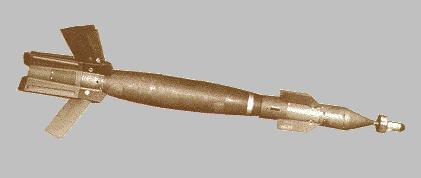
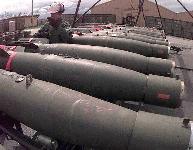
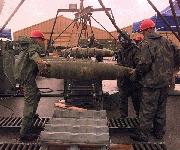
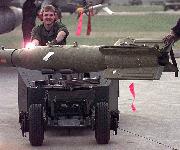
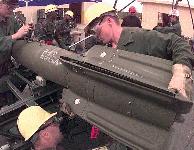
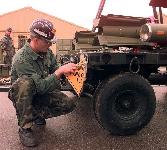
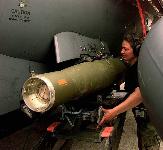
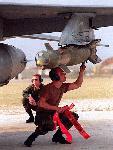




There are two generations of GBU-12 LGBs: Paveway I with fixed wings and Paveway II with folding wings. Paveway II models have the following improvements: detector optics and housing made of injec- tion-molded plastic to reduce weight and cost; increased detector sensitiv- ity; reduced thermal battery delay after release; increased maximum canard deflection; laser coding; folding wings for carriage, and increased detector field of view. (Paveway II's instantaneous field of view is thirty percent greater than that of the Paveway I's field of view).
Specifications | |
| Class | 500 lb. Paveway I & II Guided Weapon |
| Mission | Air interdiction |
| Targets | Mobile hard, fixed soft, fixed hard |
| Service | Air Force, Navy |
| Contractor | Texas Instruments |
| Program status | Operational |
| First capability | 1976 |
| Guidance | Semi-Active Laser (man-in-the-loop) |
| Control | MAU-157 Series (Paveway l) MAU-169 Series (Paveway II) |
| Autopilot | Bang-Bang Mode |
| Weight (lbs.) | 800 |
| Length (in.) | 129 |
| Diameter (in.) | 11 (Warhead); 18 (Airfoil Group) |
| Warhead | MK-82 Blast/Fragmentation |
| Explosive | Tritonal, PBXN-109 (192 lbs.) |
| Fuze | FMU-81 Tail |
| Range | 8 nautical miles |
| Circular error probable | 9 meters |
| Quantity | Air Force: 29,654 Navy: 2,982 |
| Development cost | Air Force officials state that they could not provide development cost because they do not have records covering the development period. |
| Production cost | Air Force: $563.426 million; Navy: $56.807 million |
| Total acquisition cost | Not available |
| Acquisition unit cost | Not available |
| Production unit cost | Air Force: $19,000; Navy: $19,050 |
| Platforms | A-7, A-10, B-52, F-111, F-117, F-15, F- 16, F/A-18 C/D, F-14, A-6 |








